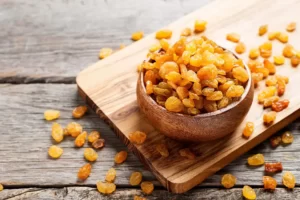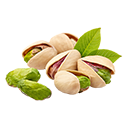


Raisins
Raisins are dehydrated and dried grapes. Iranian raisins are considered as the most popular raisins across the world. Iran is the biggest raisin producer and Also, the third major exporter of raisins is Iran. Raisin is rich in valuable sources such as potassium and calcium. There is high amount of minerals and vitamins in the texture of Raisin. This tiny nut is high in energy and also low in sugar & calorie So it can be a good choice instead of all artificial sugars and is highly recommended to diabetes people. Raisins are obtained primarily by drying grapes, either in the sun or driers, which ultimately turns the color of grapes into golden, green or black. They are naturally sweet in flavor. Raisins & sultana are produced from the same grape and the only difference is the way they are dried. Raisins/Sultana are dried naturally while golden raisins are treated with SO2 during its process. All kind of Raisins and Dates are in one category of Dried Fruit.
The best type of raisin exported product is obtained by drying ripe grapes grows in land (under the sun or in the shade) and without adding any chemicals or sulfur. Of course, it is not easy to prepare raisins in the traditional way, and proper air conditioning plays a very important role in the process. The best type of raisin exported from grapes is 80% ripe, and its color should be as uniform as possible.
Types
Although the degree of uniformity is related to the type of raisin and its preparation area, as well as the process of preparing raisins. Other quality parameters of raisins, which are usually related to the process of cleaning raisins, include the number of raisins, unripe raisins, small raisins, crushed raisins, and sugared raisins, all of which must be less than the standard defined number. The smaller the numbers, the more accurate and better the raisin cleaning process.
|
Raisins Type |
Origin (City) |
Shape |
Color |
|
Golden |
Seedless Bonab grapes |
Oval |
Golden |
|
Sultana |
Seedless Malayer grapes |
Oval |
Light Brown to Dark Brown |
|
Sun-Dried |
Thompson seedless grape |
Oval |
Dark Brown |
|
Long (Kashmar) |
Seedless Kashmar grapes |
Long |
Green |
|
Golden |
|||
|
Jumbo (Mavis) |
Shahani grapes |
Big & Oval |
Black |
History
The product in process is from the Vitis vinifera L. family formed of Sun Dried Seedless Sultanas. After being double washed, sultanas are aspirated then sieved. Raisins – comes from the Latin racemes and means “a cluster of grapes or berries”. Cultured for fruit, eaten fresh, processed into raisins or juice, with some cultivars adapted for the canning industry.
It is believed that humans discovered raisins when they happened upon grapes drying on a vine. History books note that raisins were sun-dried from grapes as long ago as 1490 B.C. But several hundred years passed before it was determined which grape variety would make the best raisin.
So the grape-vine is probably the oldest and best known of the cultivated fruit plants grown in Iran. Over 40 different types of grapes are harvested across the country. Cultivars like Asgari, Keshmeshi, Shahroudi, and Khalili have shown a lot of potentials and have a high yield rate. Keshmeshi and Asgari are the most important Iranian grape seeds. Keshmeshi and Asgari are consumed as freshly harvested herbs and raisins
Traditionally raisin grapes are hand cut and laid out in the sun on trade paper. They will sit out there in the sun to dry then get rolled up. This is a very labor intensive process. In Iran used a different method called “dry on the vine.” We train our canes (that is the branch of the vine) to grow up a wire. With the beginning of the harvest season in the month of Shahrivar (Aug 23 to Sep 22), production of raisins, using the traditional “Boulav” method, also begins.

 Pistachio
Pistachio Almond
Almond Walnut
Walnut Barberry
Barberry Raisins
Raisins Saffron
Saffron Jujube
Jujube Dried Fig
Dried Fig Kaloote
Kaloote Piarom
Piarom Zahedi
Zahedi Mazafati
Mazafati Estameran
Estameran Rabbi
Rabbi